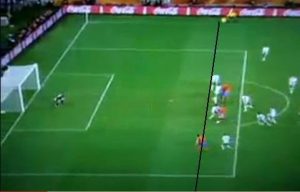
Gone are the days when coaches relied solely on instinct and experience to guide their teams. Today, with the rise of new technology in football, decisions on the pitch are more informed, faster, and surprisingly accurate. Whether it’s substitutions, formation tweaks, or managing player fatigue, technology is giving coaches tools they never had before. And as someone who’s coached a few youth matches myself, I can say one thing for sure: I wish we had this kind of help back then!
Real-Time Data Changes Everything
One of the most powerful changes is real-time data access. Coaches can now monitor their players live—from sprint speeds to heart rates and even positioning efficiency. This immediate feedback allows decisions that are based on facts, not just gut feelings. I remember once pulling out our best striker simply because he “looked tired,” only to find out later he had more energy left than anyone else. With the kind of tech available today, that kind of mistake can be avoided.
And it’s not limited to physical metrics. Some systems now analyze passing accuracy, pressing zones, and defensive gaps as they happen. All this feeds into a tablet on the sidelines, giving coaches a sort of “mini command center.” It’s like playing a video game—with real people.
Substitutions Based on Science, Not Just Timing
Traditionally, many substitutions are made based on the game clock or momentum shifts. But now, technology helps identify the exact moment a player’s performance starts dipping. For example, if a midfielder’s sprint count drops by 30% in the second half, the system might flag that as a warning. Coaches can then act before fatigue leads to mistakes—or worse, injuries.
It’s all about being proactive instead of reactive. And for teams competing at the highest level, that kind of edge can mean the difference between winning and losing. Even at lower levels, smart use of new technology in football makes coaching more strategic and less stressful.
Tactical Adjustments on the Fly
Another game-changer is tactical mapping software. These platforms allow coaches to visualize how their team is positioned in real time. If the opponent switches to a high press or starts exploiting one side, coaches can respond immediately—sometimes within seconds. I’ve seen coaches call out a formation shift during throw-ins just because the data showed an upcoming threat. It’s incredibly dynamic.
Better Feedback = Better Players
After the match, technology continues to play a role. Players now receive individual performance reports—sometimes with video breakdowns—showing what they did well and where they can improve. This isn’t just helpful; it’s motivational. Many young players find it easier to understand their coach’s advice when they can actually see the data behind it.
Personally, I’ve watched a young defender go from nervous to confident after reviewing game footage with analytics overlay. The numbers helped him believe in himself. That’s the kind of impact new technology in football can have beyond the pitch.
The Coach’s New Best Friend
To wrap it all up, new technology in football is reshaping how coaches operate—turning them into data-driven strategists with eyes on every inch of the pitch. It’s not about removing human intuition, but enhancing it with the kind of precision that wasn’t possible before.
If you’re a coach or thinking of becoming one, don’t be afraid to dive into these tools. They’re not just for elite clubs—they’re for anyone who wants to coach smarter, not just harder. After all, in today’s game, having the right information at the right time is just as important as having the right players.